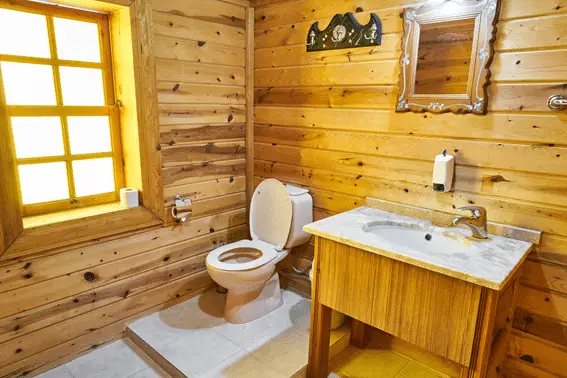A broken toilet can be a major inconvenience in any household, causing frustration and disruption to daily life. While it may seem daunting, fixing a broken toilet is often simpler than you might think.

In this guide, we will provide step-by-step instructions on how to fix a broken toilet, allowing you to regain functionality and restore peace to your bathroom.
Let’s dive in!
Step 1: Diagnosing the Problem
Before attempting any repairs, it is crucial to identify the specific issue with your toilet. Common problems include a constantly running toilet, a clogged bowl, a faulty flush mechanism, or a leaking base. By understanding the root cause, you can effectively target the necessary repairs.
Step 2: Gather the Tools
To successfully fix your broken toilet, gather the following plumbing tools beforehand:
- Plunger: A basic plunger is essential for clearing clogs.
- Adjustable wrench: Used to tighten or loosen nuts and bolts.
- Screwdriver: Required for loosening screws and accessing certain parts.
- Rubber gloves: Protect your hands from dirt and potential bacteria.
Step 3: Fixing a Clogged Toilet
Follow these steps while fixing your clogged toilet:
- Plunging Technique
- Position the plunger over the drain hole at the bottom of the toilet bowl.
- Press the plunger down firmly, creating a seal.
- Apply an up-and-down motion, maintaining the seal. Repeat several times.
- Once the clog is cleared, flush the toilet to ensure proper drainage.
- Using a Toilet Auger
- Insert the toilet auger’s flexible end into the toilet bowl.
- Rotate the handle in a clockwise direction while applying gentle pressure.
- If you encounter resistance, continue rotating and pushing until the clog is dislodged.
- Flush the toilet to check if the clog has been successfully removed.
Step 4: Repairing a Faulty Flush Mechanism
- Adjusting the Chain Length
- Open the toilet tank and locate the flush valve at the bottom.
- Determine if the chain connecting the flush valve and the flapper is too long.
- If it is too long, simply adjust its length by repositioning the chain’s hook to a closer link.
- Test the flush to ensure proper operation.
- Replacing the Flapper
- Turn off the water supply to the toilet by closing the shut-off valve.
- Drain the tank by flushing the toilet and holding down the handle.
- Disconnect the old flapper from the flush valve and remove it.
- Install a new flapper by attaching it securely to the flush valve.
- Turn on the water supply and test the flush mechanism.
Step 5: Fixing a Leaking Toilet Base
- Tightening Loose Bolts
- Remove the caps covering the bolts at the base of the toilet.
- Use an adjustable wrench to tighten any loose bolts.
- Start with a gentle tightening motion, gradually increasing the pressure until snug.
- Avoid overtightening, as it may crack the toilet base.
- Replacing Wax Ring
- Turn off the water supply and drain the toilet tank.
- Remove the nuts securing the toilet to the floor bolts.
- Lift the toilet carefully and set it aside.
- Remove the old wax ring from the flange and replace it with a new one.
- Reinstall the toilet, ensuring the base aligns with the floor bolts.
- Secure the nuts, reconnect the water supply, and test for leaks.
Common Mistakes to Avoid When Fixing a Broken Toilet
To help you avoid costly mishaps, we’ve compiled a list of common mistakes to avoid when fixing a broken toilet.
- Ignoring Safety Precautions
Safety should always be your top priority when handling any DIY repair job, and fixing a broken toilet is no exception. Before starting any work, turn off the toilet’s water supply to prevent flooding or accidental flushing.
- Overusing Chemical Drain Cleaners
When dealing with a clogged toilet, reaching for a chemical drain cleaner for a quick fix might be tempting.
- Incorrectly Sealing the Toilet Base
Improperly sealing the toilet base after removing it for repairs or maintenance can lead to leaks and water damage.
- Overtightening or Undertightening Bolts
When reinstalling the toilet, be cautious not to overtighten or under-tighten the bolts that secure it to the floor.
- Using Incompatible Replacement Parts
Toilets come in different models and styles, so it’s crucial to use compatible replacement parts when making repairs.
Conclusion
By following these step-by-step instructions, you can confidently fix common toilet issues and restore proper functionality to your bathroom. Remember, it’s important to approach each repair with caution and patience. However, if you encounter more complex problems or are unsure about performing the repairs yourself, it’s recommended to seek assistance from a professional plumber. With the knowledge gained from this guide, you’re well-equipped to tackle most toilet troubles and enjoy a fully functioning bathroom once again.
